 "Cé hé sin" (michael-m-mouse)
"Cé hé sin" (michael-m-mouse)
01/24/2018 at 14:57 • Filed to: TGV, Diesel
 0
0
 14
14
 "Cé hé sin" (michael-m-mouse)
"Cé hé sin" (michael-m-mouse)
01/24/2018 at 14:57 • Filed to: TGV, Diesel |  0 0
|  14 14 |
I was in France last month and while there took a trip to Reims by train. This involved the French rail network’s pride and joy, a TGV high speed train which travels on a matching LGV or high speed line. It reached just over 300 kmh or 190 odd mph during the short journey.
Here’s the train used.
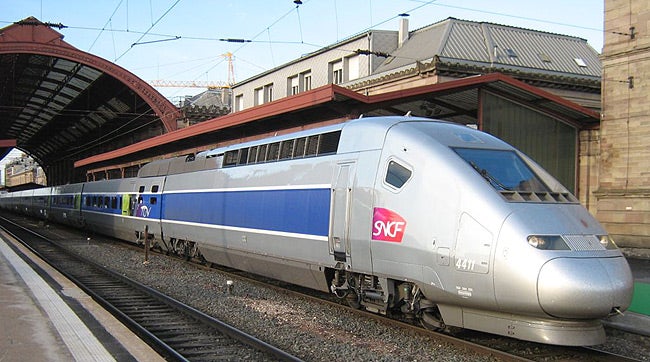
It has eight coaches topped and tailed by a pair of semi permanently coupled power cars. It’s electric, which put me to wondering. Could you replace the electrons by diesel?
This is a GE diesel electric loco.

It’s a big, ugly looking thing and it’s American so it’s obviously much more powerful than those poncy French electric things. Isn’t it? Nope. Well, it’s almost as powerful, isn’t it? Nope. In fact, those fancy electrics are in a completely different league. Each of them puts 4.8MW or about 6,450 bhp to the wheels. A diesel loco produces about 4,000 bhp at the flywheel and something like 3,600 bhp at the driving wheels if you assume 90% efficiency for electric drive which is generous. We won’t be replacing two electric power cars by two diesels then. So let’s try four and do some sums.
A TGV weighs 383 tonnes empty. I don’t know how much of this relates to the power cars but a conventional electric loco weighs about 80 tonnes so let’s take that. A diesel like the one above is at least 100 tonnes. We take off 160 tonnes of electric power then and add 400 tonnes of diesel. We now have 14,400 wheel hp compared to 12,900 before. Trouble is though the power to weight ratio has gone haywire. We began with 12,900 bhp, 383 tonnes and 33.7 bhp/tonne and have regressed to 14,400 bhp, 623 tonnes and 23.1 bhp/tonne. Six locos? No, that gives 26.2 bhp/tonne. Eight? That would be 28.1. You could still achieve your desired 300 kmh on diesel, but not in enough time to be useful because poor acceleration.
So there you have it. If you want to go really fast on rails, you’ll need mains electricity. The fastest diesel services that I can think of reach 200 kmh or about 125 mph and they need a long run to get there..
 Steve in Manhattan
> Cé hé sin
Steve in Manhattan
> Cé hé sin
01/24/2018 at 16:17 |
|
Took the Shinkansen from Tokyo to Kyoto in March 2016 - 185 mph. Who won the war again?
 Wrong Wheel Drive (41%)
> Cé hé sin
Wrong Wheel Drive (41%)
> Cé hé sin
01/24/2018 at 16:42 |
|
If only train travel were cheaper. Sure its nice to go city center to city center and have fewer delays, but plane travel is an order of magnitude cheaper. In most cases it’s 100% more expensive to take the train! Once you take into account the inconveniences of flying it is about the same travel time overall but still I will always choose what is more affordable.
This is why I always think having effective trains for distance travel in the US would be cool and all but nothing can really beat the cost effectiveness of flying. There is no way a hyperloop train from SF/LA to NYC is going to cost $150 or less whereas that is easy with a flight.
 ttyymmnn
> Cé hé sin
ttyymmnn
> Cé hé sin
01/24/2018 at 16:58 |
|
I have been to Reims and drank the champagne, though we arrived by car. The cathedral there is stupendous, and for the historian in me, to stand in the very place Jeanne d’Arc stood stood was mind blowing.
 Cé hé sin
> Wrong Wheel Drive (41%)
Cé hé sin
> Wrong Wheel Drive (41%)
01/24/2018 at 17:28 |
|
There’s a certain range where air travel is (given the inconvenience of getting to and from airports and spending forever queueing for security) too slow. As an example, flights between London and Paris reduced once the Eurostar was available - it’s claimed that the train took more than 70% of the airlines’ market away. Like air travel, it can be cheap if you can book well in advance and are flexible.
 djmt1
> Wrong Wheel Drive (41%)
djmt1
> Wrong Wheel Drive (41%)
01/24/2018 at 17:31 |
|
Hey only a decade (let’s be optimistic) away and you’ll have your own TGVs.
 Cé hé sin
> ttyymmnn
Cé hé sin
> ttyymmnn
01/24/2018 at 17:33 |
|
Yes, been there! Also, stood here:

 ttyymmnn
> Cé hé sin
ttyymmnn
> Cé hé sin
01/24/2018 at 17:53 |
|
The weight of history in that building is enough to crush you. If you are paying attention. St. Denis was also an extraordinary place, along with Sainte-Chapelle. It’s like walking into a jewelry box.

 facw
> Cé hé sin
facw
> Cé hé sin
01/24/2018 at 18:37 |
|
Well we can do a bit better than 125 mph if we wanted to. Diesel won’t get you there, but the Bombardier JetTrain was designed to do 150:
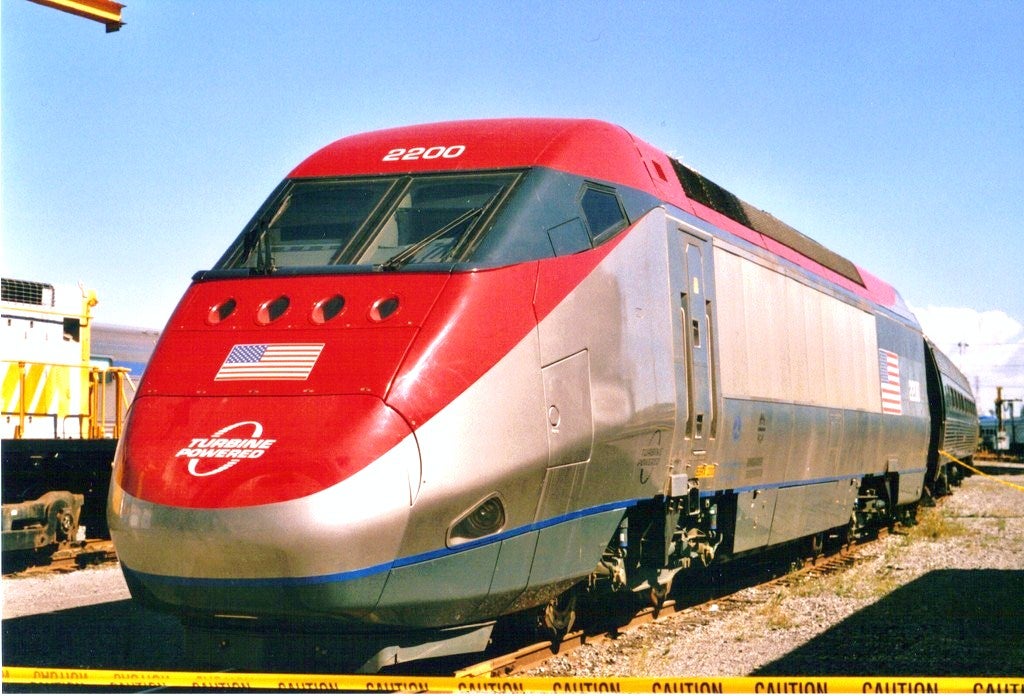
Other turbine trains like the UAC Turbotrain and TGV 001 could at least get fast enough to be considered truly high-speed, if not as fast as the top modern electrics.
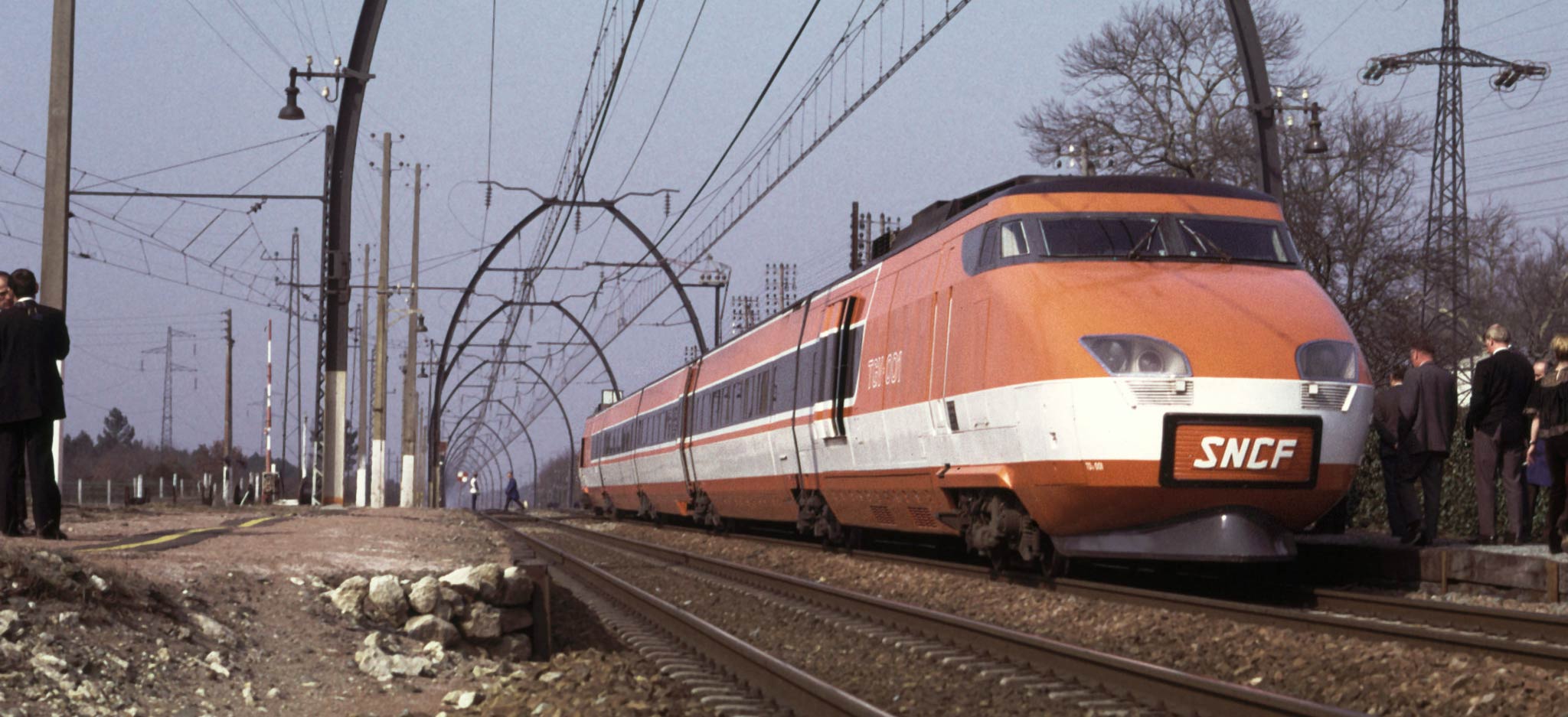

You just run into the twin problems that turbine trains are expensive to run, and that your un-electrified rail line is probably too crappy for these trains to run on at high-speed anyway.
 Cé hé sin
> facw
Cé hé sin
> facw
01/24/2018 at 19:07 |
|
Little known fact: the TGV was originally intended (or at least the possibility was seriously considered) to be gas turbine powered until the 1973 oil crisis put an end to the idea.
Despite the running costs SNCF kept their Turbotrains in use for more than thirty years. Interestingly their replacement by diesels on the last line using them added about an hour to running times!
 Dusty Ventures
> Cé hé sin
Dusty Ventures
> Cé hé sin
01/24/2018 at 20:47 |
|
To be fair to the GE loco pictured up top, those aren’t meant to be fast and they’re not used on passenger trains. Those are torque monsters, the ocean freighters of the U.S. rail system, often pulling a line of rail cars that can stretch over 7,000 feet (2,100 m) and weigh 8,000 short tons (7,250 metric tons). Most of the US passenger rail fleet is made up of the GE Genesis. It’s still diesel, but it isn’t as ugly and is more streamlined for faster travel.
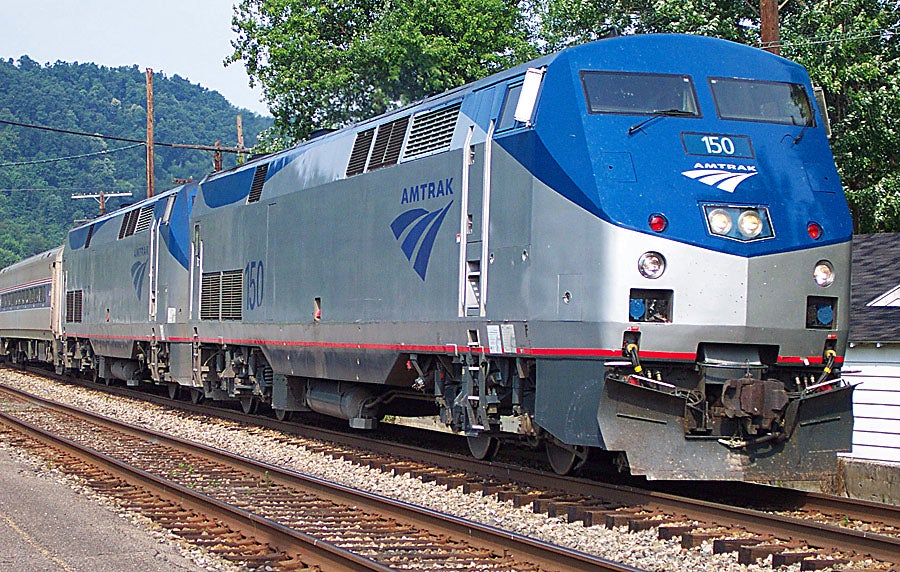
The Northeastern US rail corridor does actually use a “high speed” electric train network called the Amtrak Acela, which gets up to 150 mph in some places. It makes sense in this part of the country due to the heavier population. Two thirds of the entire country’s rail passengers live in or near New York City. Plans were set in motion in 2016 to update the Acela network over the next decade to allow speeds up to 186 mph and higher speeds over longer stretches of the route.
As for the rest of the country’s passenger network, the two main problems are the sheer scale of the network and the insufficient number of passengers. The US has 140,000 miles of track in all, with Amtrak, the nation’s passenger rail line using 21,000 miles on its 44 routes. Updating even a quarter of that track to high speed electric would be a massively expensive undertaking, and aside from the east/northeast and California/west coast there
aren’t many places
with enough people for it to be worth the expense.
 Cé hé sin
> Dusty Ventures
Cé hé sin
> Dusty Ventures
01/25/2018 at 17:24 |
|
True, but I just used a random loco that would be familiar to many people. If you wanted speed obviously you’d have a slipperier shape, four axles (less weight and friction) and so on. Same issues with power/weight though.
Interestingly the Acela trains are localised versions of the Alstom TGV and even more interestingly they manage to make money, something which the rest of the Amtrak system isn’t too good at.
 Cé hé sin
> djmt1
Cé hé sin
> djmt1
01/25/2018 at 17:25 |
|
They already have! The Acela high speed trains used in the Northeast are Americanised versions of Alstom TGVs.
 djmt1
> Cé hé sin
djmt1
> Cé hé sin
01/25/2018 at 17:31 |
|
That’s being insanely generous. Those trains may do 150 mph on Microsoft Train Simulator but sure as heck don’t in reality. Anyway I was mainly referring to the tracks (more specifically California) since the North East Corridor has the same problem as Britain’s rail network namely it’s 150 years old.
 Cé hé sin
> djmt1
Cé hé sin
> djmt1
01/25/2018 at 18:04 |
|
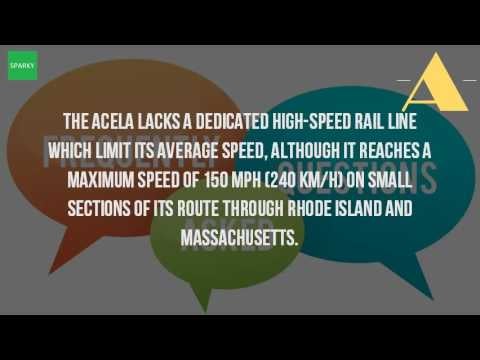
The rest of the US doesn’t have the population density or the will to build really high speed lines although noises are made about it now and again.